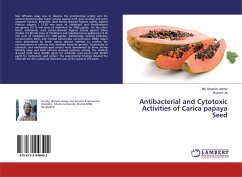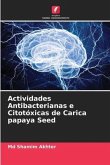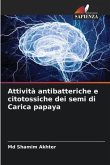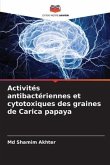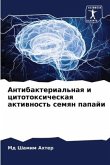Disc diffusion assay was to observe the antimicrobial activity and the extracts demonstrated higher activity against both gram positive and gram negative bacteria. Ethanoilic seed extract showed highest activity against Proteus vulgaris ( 13.50 mm zone of inhibition) and Pseudomonas aeruginosa (12.75 mm zone of inhibition) for 1000 µg/disc. On the other hand, methanolic seed extract showed highest activity against Vibrio cholera (13.50 mm zone of inhibition) and Staphylococcus epidermis (13.25 mm zone of inhibition) for 1000 µg/disc. Additionally, minimal inhibitory concentration (MIC) and minimal bactericidal concentration (MBC) values were determined by broth macro dilution method to confirm the concentrations of extracts that inhibited bacterial growth. Cytotoxicity of ethanolic and methanolic seed extract were determined by brine shrimp lethality assay and both extracts showed cytotoxic activity. The method showed LC50 value 44.693 µg/ml for ethanolic seed extract and 60.953 µg/ml for methanolic seed extract. The experimental findings showed the rationale for the traditional medicinal uses of the seeds of this plant.

